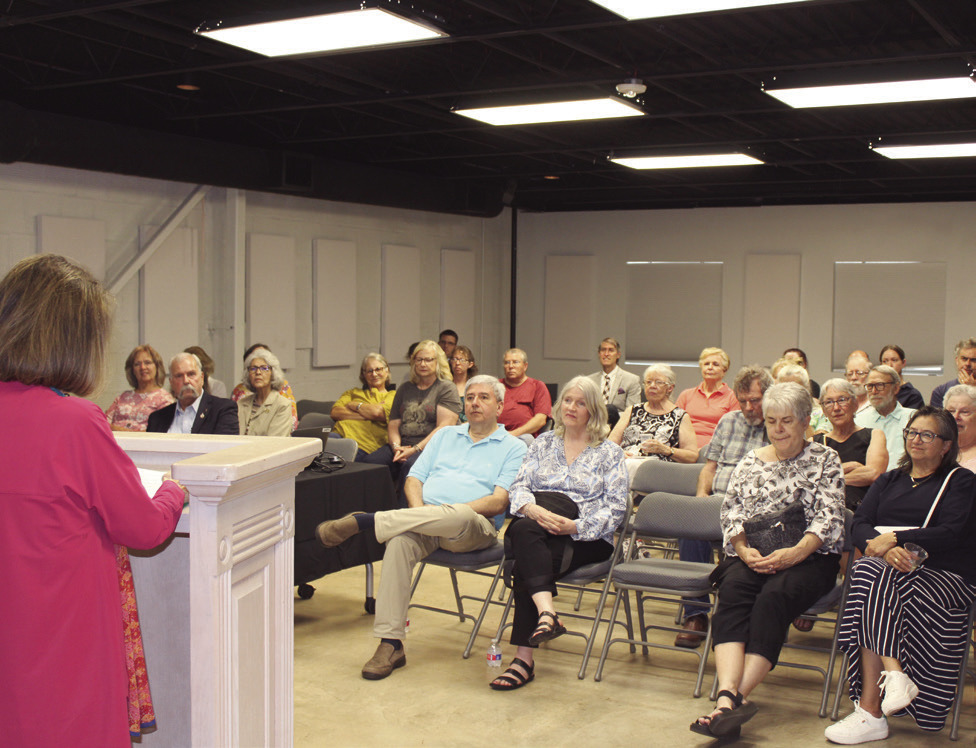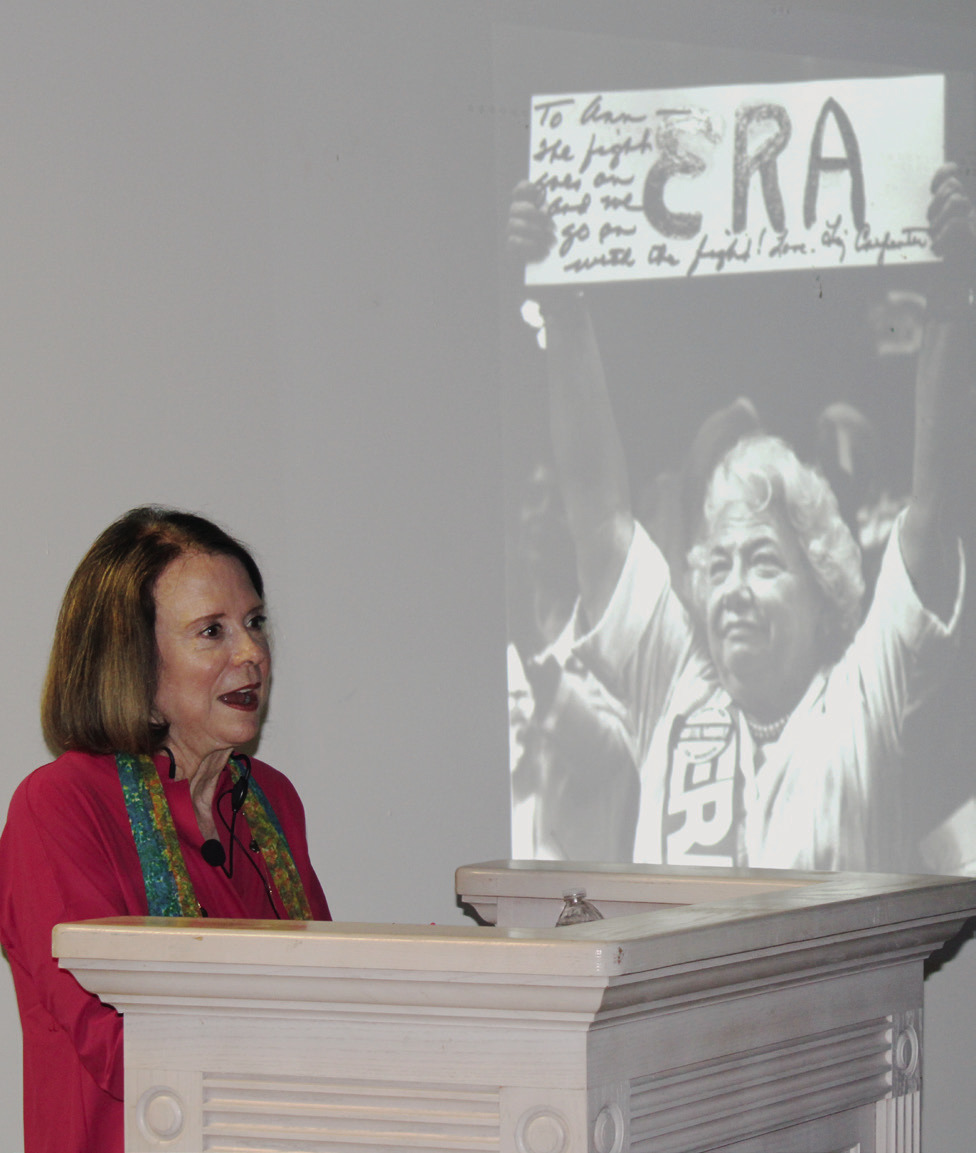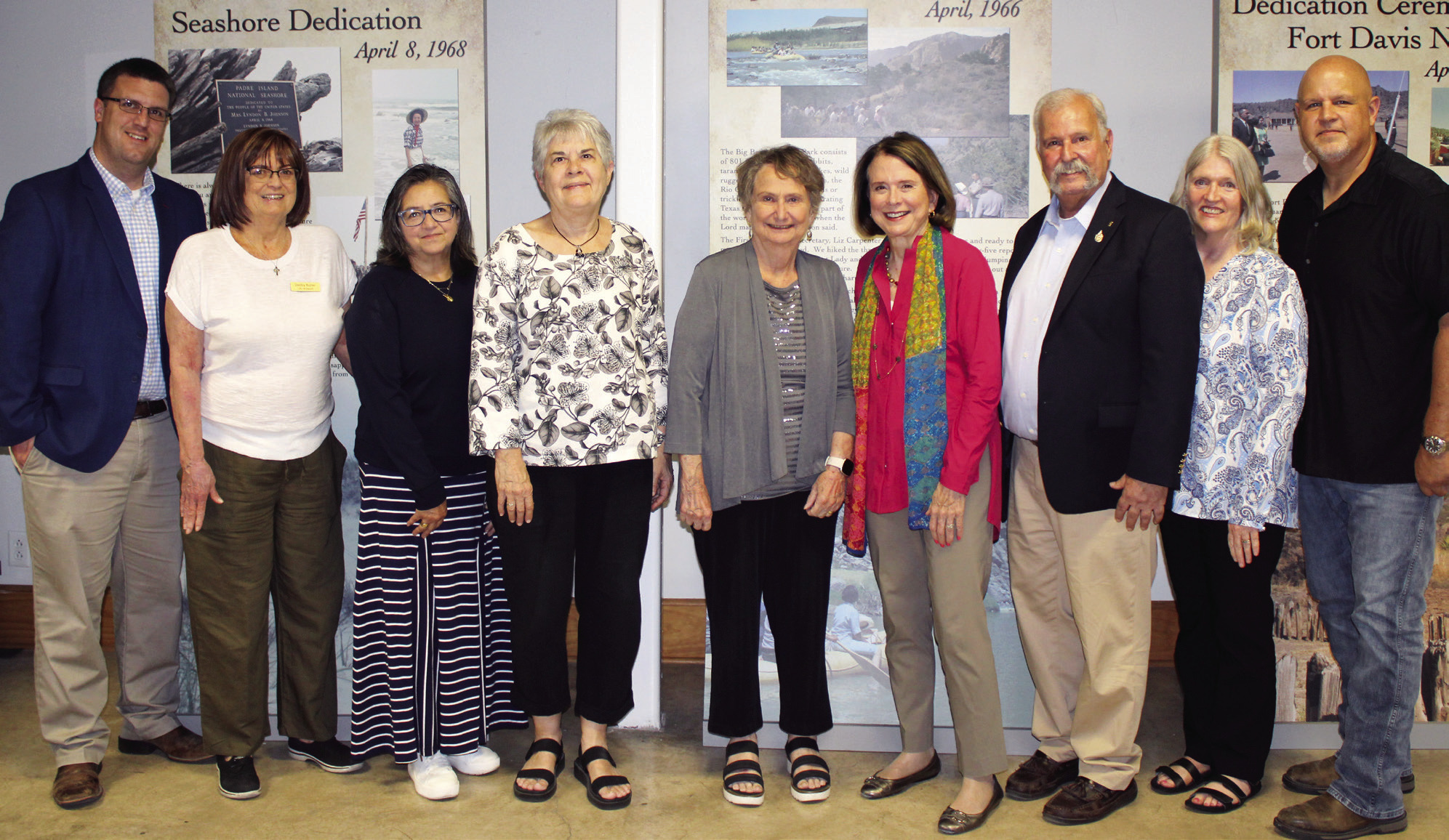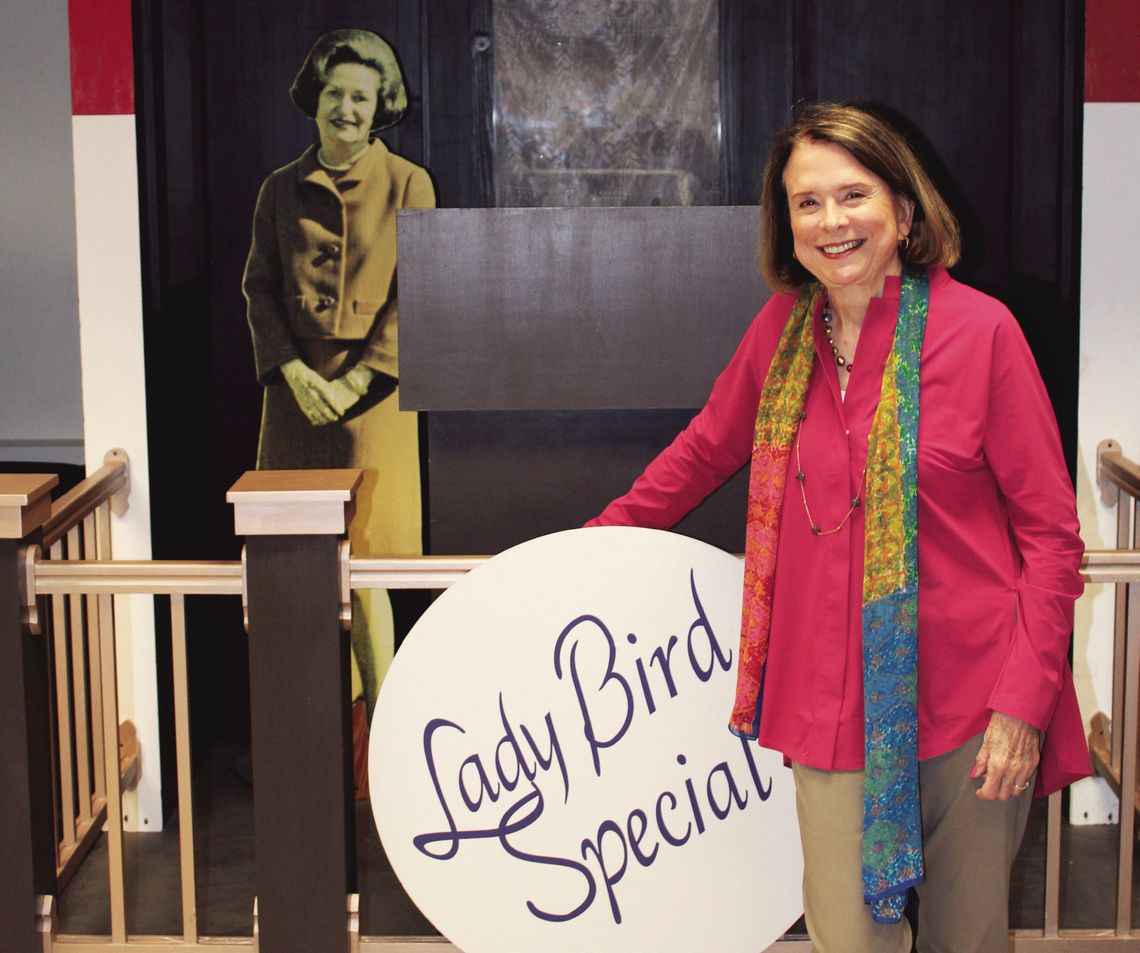LBJ MUSEUM
LBJ Museum’s Chautauqua features Liz Carpenter’s journey from journalist to women’s rights activist
Liz Carpenter was a Washington D.C. mover and shaker that started her career as a political journalist in the 1940s, shifted to advising Lyndon Baines Johnson — while he was vice president, then was press secretary for Lady Bird Johnson all before becoming a key figure in the fight for women’s rights in the 70s and beyond. Her daughter, Christy Carpenter, has created a documentary about her mother — Shaking it Up: the Life and Times of Liz Carpenter — and was the keynote speaker at the LBJ Museum’s recent Summer Chautauqua.
Wayne Kraemer, LBJ Museum board president, gave the history of the Summer Chautauqua. He said the San Marcos Chautauqua ran from 1885 to 1895 in a tabernacle that was in the location where Old Main on the Texas State University campus now sits.
“They sold the property to the state for the formation of Southwest Texas. In 1999, the University held a 100 year anniversary of the founding of the university, and they held a year long Chautauqua there,” Kramer said. “They talked about issues like the future of education, media, the planet, politics — the same things they were talking about in the original Chautauqua are the same things we're talking about today.”
Liz was from Austin and attended the University of Texas before heading to Washington to “go straight to the middle of the action.” The next step was to establish a name for herself in a typically male-dominated industry.
“It was a man's world, and most newspapers would not hire women at all. But she manages to get a job with a small news bureau in the national press building, and that gives her that great ‘passport to power,’ as she called it, and a press pass,” Carpenter said. “She starts going to Eleanor Roosevelt’s press conferences.”
Carpenter said Eleanor Roosevelt was pivotal in uplifting female journalists.
“Eleanor did a great thing to spur the hiring of women,” Carpenter said. “She would not allow any newspaper to cover her press conferences unless they sent a female reporter.”
Liz was covering LBJ regularly and became close with him and his wife, Lady Bird.
“Lyndon Johnson called her and said, ‘Will you please come join the great adventure of our lives?’ So she went on the other side of the pad and pencil through the duration of the campaign, traveled around with them, organizing all kinds of things,” Carpenter said. “Johnson becomes vice president… and he called her and said, ‘Well, I want you to join my vice presidential staff.’ So she did that. LBJ really liked the fact that she was versatile, that she was willing to roll up her sleeves and do anything that needed to be done.”
Carpenter said that Liz was present in Dallas in 1963 on the day that President Kennedy was assassinated, and she wrote LBJs remarks to address the public as the new president. Now elevated to First Lady, Lady Bird Johnson appointed Liz as her staff director and press secretary.
“She was the first newswoman to ever be in that position,” Carpenter said, adding that she was able to be front row and center to Lady Bird’s beautification of the country — though Lady Bird was never fond of that term as it diminished the impact of preservation, making it sound merely cosmetic. “Given her 20-year relationship with Lyndon Johnson… she was able to hit the ground running when she got to the White House.”
Carpenter said in 1971, her mother embarked on a new chapter as a political activist working on behalf of women's causes.
“It all began when she got a phone call from Betty Friedan, a name you all probably probably know, who really helped jumpstart the women's movement with the publication of her book ‘The Feminine Mystique,’” Carpenter said, adding that Friedan invited Liz to sit with all of the congresswomen of that time for a meeting, which she was able to attend with her mother. “They discussed the need to form what became the National Women's Political Caucus, so my mother was one of the co-founders.”
At that time there were not many women in elected positions, and filling those seats with eligible females was the primary motivating factor for the NWPC.
“This was the state of affairs when the National Political Caucus came into being, zero [female] governors, one [female] senator, 12 Congresswomen, nobody [that was female] in the cabinet and no [female] Supreme Court justice,” Carpenter said. “At the first meeting of the Texas Political Caucus in Nov. of 1971, Liz was the keynote speaker. And here's a quote from her speech that kind of captures the way she would try to work to galvanize the crowd. She said, ‘So let every party chairman know. Let every governor and every candidate for governor know that today, women are issuing a declaration of independence. We are tired of making the coffee, licking the stamps and writing the checks. We mean to be in on the decisions. So if we seem a little pushy, if we seem a little noisy, it's because we shout, so you will hear us.’” Carpenter’s documentary, Shaking it Up: the Life and Times of Liz Carpenter, will be playing at the Bullock Museum, located at 1800 Congress Avenue in Austin, from 1 to 3:30 p.m. on September 28. Purchase tickets at this link thestoryoftexas.com/ visit/calendar/shaking-itup- 202409.













